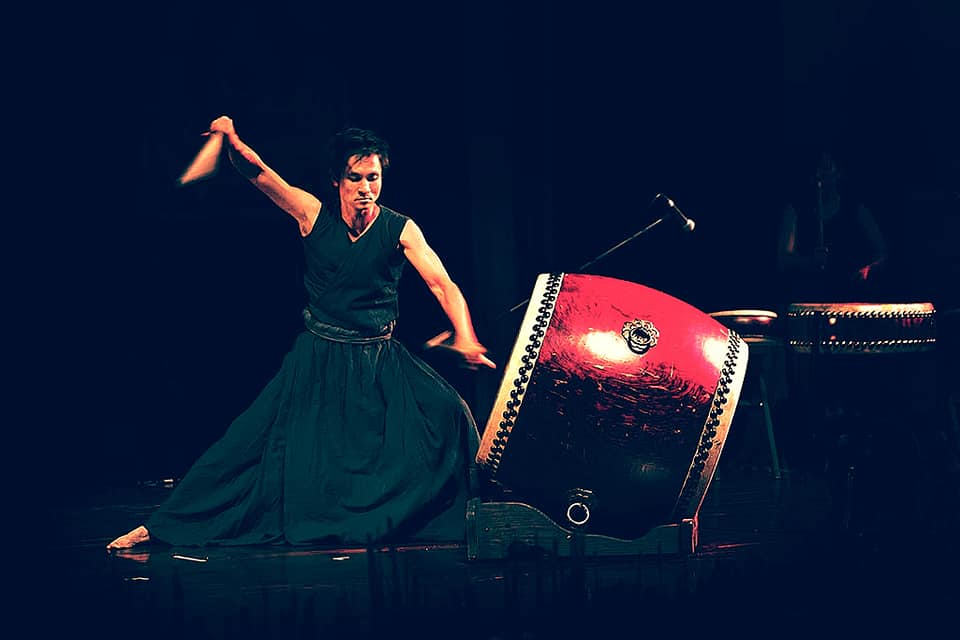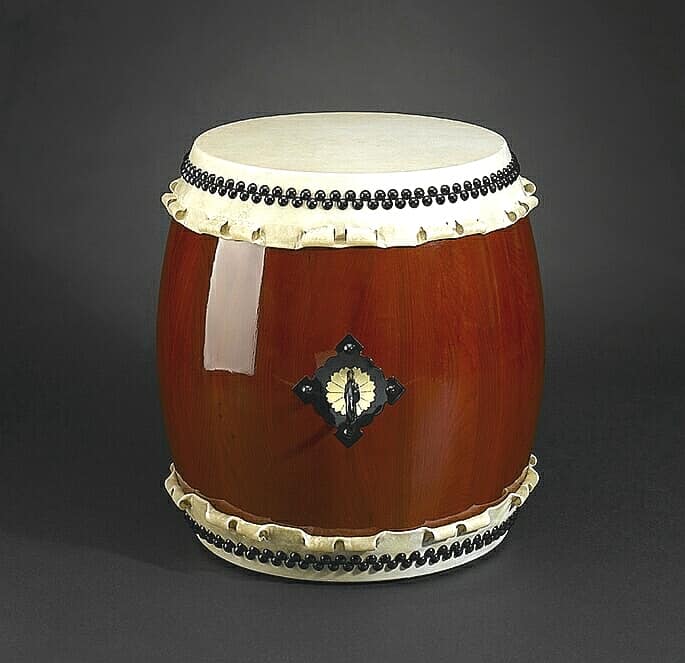Kumi-daiko groups consist primarily of percussive instruments where each of the drums plays a specific role. Of the different kinds of taiko, the most common in groups is the nagadō-daiko. Chū-daiko are common in taiko groups and represent the main rhythm of the group, whereas shime-daiko set and change tempo.
A shime-daiko often plays the Jiuchi, a base rhythm holding together the ensemble. Ō-daiko provide a steady, underlying pulse and serve as a counter-rhythm to the other parts.It is common for performances to begin with a single stroke roll called an oroshi (颪, “wind blowing down from mountains”).
The player starts slowly, leaving considerable space between strikes, gradually shortening the interval between hits, until the drummer is playing a rapid roll of hits. Oroshi are also played as a part of theatrical performance, such as in Noh theater.

Drums are not the only instruments played in the ensemble; other Japanese instruments are also used. Other kinds of percussion instruments include the atarigane (当り鉦), a hand-sized gong played with a small mallet. In kabuki, the shamisen, a plucked string instrument, often accompanies taiko during the theatrical performance.
Kumi-daiko performances can also feature woodwinds such as the shakuhachi and the shinobue.
Voiced calls or shouts called kakegoe and kiai are also common in taiko performance.
They are used as encouragement to other players or cues for transition or change in dynamics such as an increase in tempo.In contrast, the philosophical concept of ma, or the space between drum strikes, is also important in shaping rhythmic phrases and creating appropriate contrast.

There is a wide variety of traditional clothing that players wear during taiko performance.
Common in many kumi-daiko groups is the use of the happi, a decorative, thin-fabric coat, and traditional headbands called hachimaki.Tabi, momohiki (もも引き, “loose-fitting pants”), and haragake (腹掛け, “working aprons”) are also typical.
During his time with the group Ondekoza, Eitetsu Hayashi suggested that a loincloth called a fundoshi be worn when performing for French fashion designer Pierre Cardin, who saw Ondekoza perform for him in 1975. The Japanese group Kodo has sometimes worn fundoshi for its performances.
Source: Aikido/Facebook



